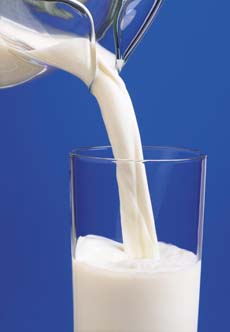

Scoop a coupe of gelato. No adornment is needed—but it sure is fun! Photo courtesy SXC.
|
STEPHANIE ZONIS is a contributing editor.
|
|
March 2006
Last Updated December 2013
|
 |
Product Reviews / Main Nibbles / Ice Cream & Sorbet
Gelato: The Real Scoop
Dense, Delicious & Different, Gelato vs. Ice Cream
Page 1: What Is Gelato?
CAPSULE REPORT: Learn the difference between ice cream and gelato, and then treat yourself to a scoop. If there’s no gelateria in your neighborhood, you can order from the great ones below. This is Page 1 of a three page article. Click on the black links below to visit other pages.
Introduction
It seems there is nothing that Stephanie Reitano would rather talk about than gelato. That’s fortunate, as she and her husband own two gelaterie (gelato parlors) in Philadelphia, and she is the gelato maker.
It’s an odd turn in her life, as she never cared for frozen desserts until she and her husband traveled to Italy. They went to Capri, and, on the way to their hotel, her husband stopped and bought a gelato. She tasted it and was “floored” by the incredible flavor.
That was the beginning of a journey that led her away from the law school she was supposed to attend and into a very small (800 square feet) commercial kitchen. These days, Reitano divides her time between conjuring new flavors into being; dealing with local suppliers and chefs; trying to get her gelato, Capogiro Gelato Artisans, into the public eye; and being a wife and mother of three.
If you’re curious about the differences between gelato and ice cream, those are best expressed by Pete Palazzolo, of Palazzolo’s Artisan Gelato & Sorbetto in Saugatuck, Michigan. “Gelato is simply ice cream,” he states, “Ice cream the way it was before the American Industrial Revolution blew it full of air and artificially flavored it.”
In other words, gelato is:
- More dense.
- Made with more milk than cream to better showcase the flavors (the more cream, the more fat to coat the tongue and interfere with the flavors)
- Bursting with natural ingredients—for example, actual puréed banana, not banana extract.
Overrun Explained
The air he’s talking about is referred to in the trade as “overrun.” Technically, overrun is the increase in the volume of the finished frozen dessert over the volume of base (or mix) used; in practical terms, it’s the amount of air whipped into the ice cream during the manufacturing process.
Once upon a not-so-long-ago time, ice cream was hand-cranked in buckets filled with ice and salt. The ice cream was stirred slowly during this process, which didn’t allow for the incorporation of much air. Then, the continuous-batch freezer system was developed.
This allows for far less hand labor, much swifter production speed, and no ice or salt. It also allows manufacturers to set the amount of air they want mixed into their base. Palazzolo claims that most American brands of bulk ice cream range from 60% to 120% overrun (that means they consist of 30% to 60% air).
Air, of course, increases the volume of a frozen dessert, and allows a manufacturer to produce (and sell) more product without using correspondingly more ingredients. Even a better-quality ice cream might have overrun of as much as 50%.
By contrast, according to Palazzolo, traditionally-made gelato should contain under 20% overrun (10% air). The result will be a texture denser than that of ice cream. Because of this increased density, gelato’s texture is very creamy, even though it has less butterfat content than most ice creams.
Gelato Is Milk-Based
Yes, that’s right; gelato contains less fat than do many ice creams. Most superpremium ice creams in the U.S. have a butterfat content of 15% to 18%; gelato’s butterfat content normally runs from 4% to 14%.
- While ice cream often contains more cream than milk, gelato is most often made from milk, with only a little cream, if any at all.
- The significantly greater amount of butterfat in ice cream tends to coat the mouth, and especially the tongue, where your taste buds are located; this can mask flavors. In addition, gelato tends to have a higher proportion of flavoring than does ice cream.
- And, rather than using flavorings, traditional gelato uses real ingredients, like strawberries or caramelized sugar. That’s why it’s customary for a good-quality hazelnut gelato to have a heightened, true hazelnut flavor, for instance, and why a gelato cioccolato can have an intense chocolate taste.
|
|

One key difference between ice cream and
gelato is that ice cream is most often made just from milk. That’s why it has less fat than
ice cream, even though it is creamier due to
its greater density.
|
Some gelato manufacturers make a big point of trumpeting that their products are lower in calories and fat than ice creams. That’s accurate, but gelato is by no means a low-calorie dessert. A half-cup serving of gelato can easily provide 180 or more calories; fat can account for one-quarter to one-third or more of those calories.
Continue To Page 2: Domestic Gelato
Go To The Article Index Above
Lifestyle Direct, Inc. All rights reserved. Images are the copyright of their respective owners.

|





